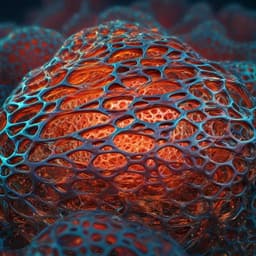
Engineering and Technology
Highly reversible zinc metal anode enabled by strong Brønsted acid and hydrophobic interfacial chemistry
Q. Nian, X. Luo, et al.
Discover a groundbreaking approach to enhancing zinc anode reversibility in batteries! Researchers, including Qingshun Nian and Xuan Luo, unveil how bis(trifluoromethanesulfonyl)imide transforms battery interfacial chemistry, achieving impressive performance metrics like a Coulombic efficiency of 99.7%. This work could redefine the future of energy storage.
~3 min • Beginner • English
Related Publications
Explore these studies to deepen your understanding of the subject.







